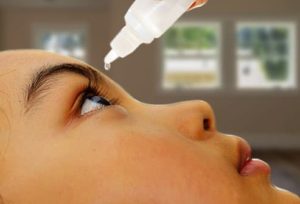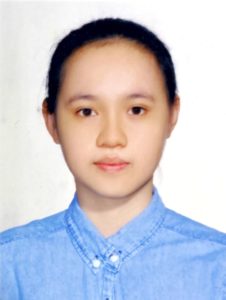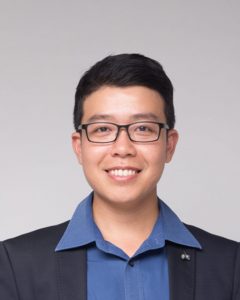March 1, 2022
By Linh Hoang, MD, MSc, and Huy Tran, MD, PhD
 Atropine and orthokeratology are effective in slowing myopia. Despite the unclear mechanism of action, the most prevalent hypothesis suggests that atropine slows myopia progression via the muscarinic receptors. In contrast, OrthoK affects myopia control by altering the peripheral hyperopic defocus. Kinoshita and coworkers aimed to investigate whether the combination treatment via the distinct mechanisms of action, i.e., atropine and OrthoK, is more effective than monotherapy.
Atropine and orthokeratology are effective in slowing myopia. Despite the unclear mechanism of action, the most prevalent hypothesis suggests that atropine slows myopia progression via the muscarinic receptors. In contrast, OrthoK affects myopia control by altering the peripheral hyperopic defocus. Kinoshita and coworkers aimed to investigate whether the combination treatment via the distinct mechanisms of action, i.e., atropine and OrthoK, is more effective than monotherapy.
The authors conducted a 2-year prospective randomized clinical trial in Japan where eighty children, aged 8–12 years, with spherical equivalent refraction (SER) of −1.00 to −6.00D were randomly allocated into two groups to receive either a combination of OrthoK and 0.01% atropine solution (combination group) or OrthoK only (monotherapy group). Data on axial length (AL), SER, and other parameters were documented and analyzed at baseline and every 6 months over the 24-month follow-up. Seventy-three subjects completed the 2-year study (38 in the combination group and 35 in the monotherapy group).
Over two years, the OrthoK and 0.01% atropine combination was 28% more effective in slowing axial elongation than OrthoK monotherapy alone (0.29 ± 0.20 mm versus 0.40 ± 0.23 mm, respectively). No significant difference in SER between the combination and monotherapy groups was observed. While the changes in axial length were significantly smaller in the combination group compared to the monotherapy group, the changes were significant only for Year 1 and not Year 2. In a subgroup of subjects with an SER of −1.00 to − 3.00D, changes in AL at all visits were significantly smaller in the combination group than in the monotherapy group. In contrast, there were no significant differences in AL between the two groups for subjects with SER of –3.01 to –6.00D.
This 2-year randomized trial demonstrates that the combination of OrthoK and 0.01% atropine is superior in slowing axial elongation compared to OrthoK alone, especially in the first year and in children with low initial myopia. Although this study has some limitations, such as no participant masking and not considering the environmental factors, it provides evidence for the superiority of efficacy in using combination therapy of OrthoK and 0.01% atropine for myopia control, especially in children with low initial myopia.
Abstract
Efficacy of Combined Orthokeratology and 0.01% Atropine Solution for Slowing Axial Elongation in Children with Myopia: A 2-year Randomised Trial
Nozomi Kinoshita, Yasuhiro Konno, Naoki Hamada, Yoshinobu Kanda, Machiko Shimmura-Tomita, Toshikatsu Kaburaki & Akihiro Kakehashi
Eighty Japanese children, aged 8–12 years, with a spherical equivalent refraction (SER) of −1.00 to −6.00 dioptres (D) were randomly allocated into two groups to receive either a combination of orthokeratology (OK) and 0.01% atropine solution (combination group) or monotherapy with OK (monotherapy group). Seventy-three subjects completed the 2-year study. Over the 2 years, axial length increased by 0.29 ± 0.20 mm (n = 38) and 0.40 ± 0.23 mm (n = 35) in the combination and monotherapy groups, respectively (P = 0.03). Interactions between combination treatment and age or SER did not reach significance level (age, P = 0.18; SER, P = 0.06). In the subgroup of subjects with an initial SER of −1.00 to −3.00 D, axial length increased by 0.30 ± 0.22 mm (n = 27) and 0.48 ± 0.22 mm (n = 23) in the combination and monotherapy groups, respectively (P = 0.005). In the −3.01 to −6.00 D subgroup, axial length increased by 0.27 ± 0.15 mm (n = 11) and 0.25 ± 0.17 mm (n = 12) in the combination and monotherapy groups, respectively (P = 0.74). The combination therapy may be effective for slowing axial elongation, especially in children with low initial myopia.
Kinoshita, N., Konno, Y., Hamada, N., Kanda, Y., Shimmura-Tomita, M., Kaburaki, T., & Kakehashi, A. (2020). Efficacy of combined orthokeratology and 0.01% atropine solution for slowing axial elongation in children with myopia: a 2-year randomised trial. Scientific Reports, 10(1), 1-11.
DOI: https://doi.org/10.1038/s41598-020-69710-8
 |
Linh Hoang, MD, MSc, is an ophthalmologist practicing at Hai Yen Eye Care, Ho Chi Minh City, Vietnam, and collaborates with BHVI on myopia-related projects. |
 |
Huy Tran, MD, PhD is a pediatric ophthalmologist with the Myopia Control Clinic, Hai Yen Eye Care in Ho Chi Minh City, Vietnam and collaborates with BHVI on myopia-related projects. |













